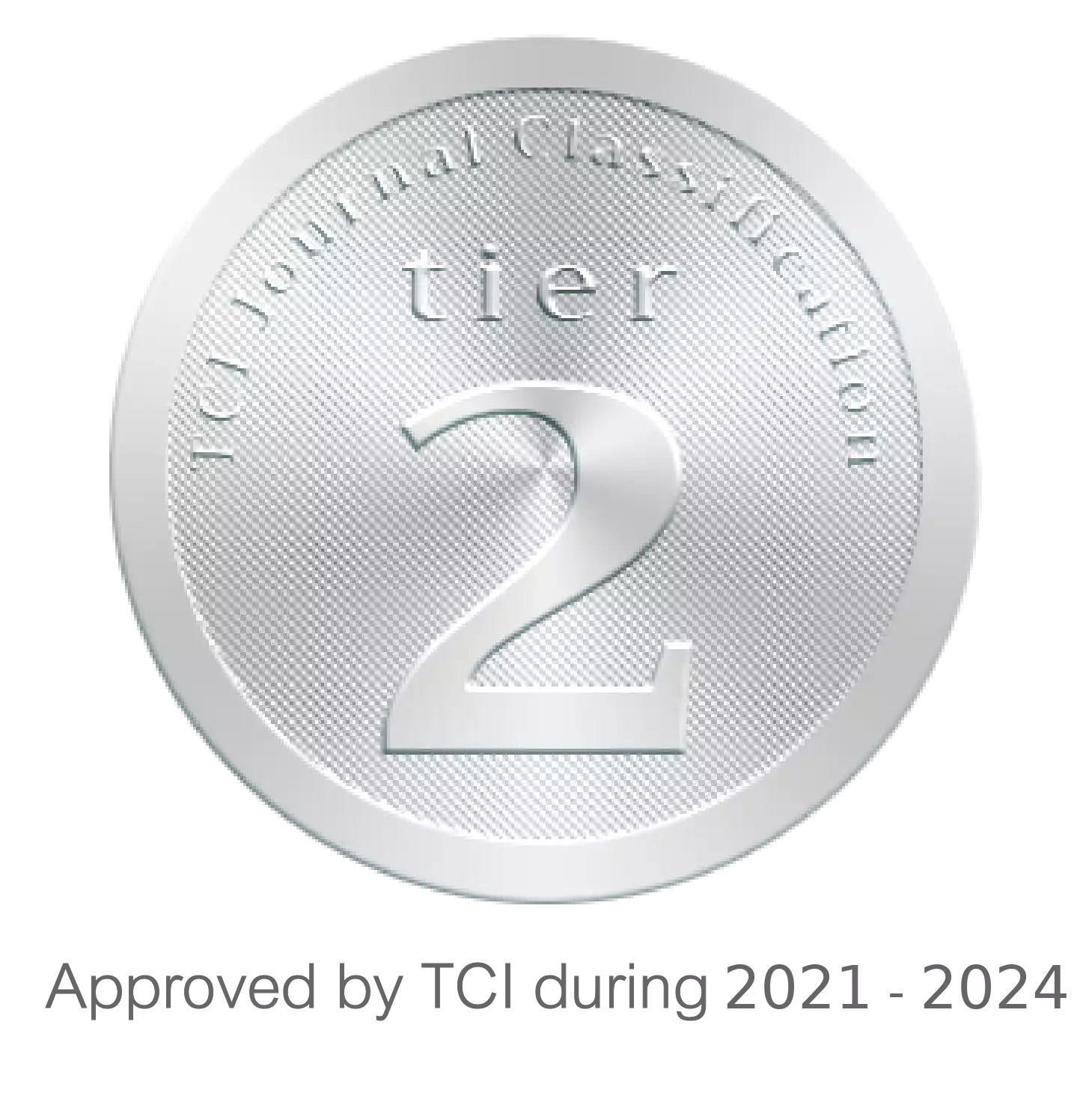การศึกษาผลตอบแทนที่ปรับความเสี่ยงของหุ้นสามัญของการลงทุนในหุ้นสามัญในตลาดหลักทรัพย์แห่งประเทศไทย (SET) และตลาดหลักทรัพย์ เอ็ม เอ ไอ (mai) โดยมาตรวัด Jensen's Alpha
A Study on Risk-Adjusted Performance of Common Stocks Listed in The Stock Exchange of Thailand (SET) and Market for Alternative Investment (mai) via Jensen’s Alpha
Keywords:
มาตรวัดJensen's Alpha ผลตอบแทนที่ปรับความเสี่ยง ตลาดหลักทรัพย์เอ็มเอไอ, Jensen’s Alpha, Risk-Adjusted Performance, Market for Alternative Investment (mai)Abstract
งานวิจัยนี้มีวัตถุประสงค์เพื่อวิเคราะห์ผลตอบแทนที่ปรับความเสี่ยงของหุ้นสามัญของบริษัทที่จดทะเบียนในตลาดหลักทรัพย์แห่งประเทศไทย(The Stock Exchange of Thailand, SET) และตลาดหลักทรัพย์ เอ็ม เอ ไอ (Market for Alternative Investment, mai) ผ่านมาตรวัด Jensen’s alpha โดยใช้ข้อมูลรายเดือนระหว่าง พ.ศ. 2557–2561จำนวน 525 บริษัท แบ่งเป็น SET 450 บริษัท และ mai 75 บริษัท ผลการศึกษาพบว่า Jensen’s alpha ของตลาด SET และตลาด mai โดยรวมไม่ต่างจากศูนย์ หมายความว่าไม่สามารถสร้างผลตอบแทนส่วนเกิน (excess return) หรือ เอาชนะตลาดได้ (beat the market) แต่เมื่อศึกษาแยกหมวดธุรกิจ (sector) พบว่ามี 5 หมวดธุรกิจของ SET ที่สามารถสร้างผลตอบแทนส่วนเกินได้อย่างมีนัยสำคัญทางสถิติคือ กลุ่มธุรกิจกระดาษและวัสดุการพิมพ์สามารถสร้างผลตอบแทนส่วนเกินได้ที่ 3.36%, พัฒนาอสังหาริมทรัพย์ 0.73%, การแพทย์ 0.6%, พาณิชย์ 0.58%,และ พลังงานและสาธารณูปโภค 0.43% แต่มี 2 กลุ่มธุรกิจที่มีผลตอบแทนต่ำกว่าผลตอบแทนที่ปรับความเสี่ยงอย่างมีนัยสำคัญคือ กองทุนรวมอสังหาริมทรัพย์และกองทรัสต์เพื่อการลงทุนในอสังหาริมทรัพย์ที่ -1.39% และสื่อและสิ่งพิมพ์ -0.83% สำหรับตลาด mai มีหนึ่งอุตสาหกรรมที่มีค่า alpha เป็นบวกอย่างมีนัยสำคัญทางสถิติที่ 1.68% คืออุตสาหกรรมอสังหาริมทรัพย์และก่อสร้าง สรุปแม้ว่าการที่จะเอาชนะตลาดโดยรวมเป็นไปได้ยาก แต่ยังมีโอกาสทำได้ในบางกลุ่มธุรกิจ
This study investigates risk-adjusted performance of common stocks listed in the Stock Exchange of Thailand (SET) and the Market for Alternative Investment (mai) by employing Jensen’s alpha performance metric. The data consisted of 525 firms: 450 from SET and 75 from mai. The research finds that Jensen’s Alpha is not statistically different from zero for both markets, SET and mai, implying the markets in general cannot be beaten. However, a further investigation into each business sector reveals five SET sectors and one mai industry that could outperform the market, viz., (1) paper & printing materials, (2) property development, (3) health care services, (4) commerce, (5) energy & utilities, and (6) property & construction, respectively. In addition, there are two SET business sectors that fall below market expectations, namely, property fund & real estate investment trusts and paper & printing materials. The findings confirm that beating the market is rarely the case. Nonetheless, there are a window of opportunity for some sectors.









